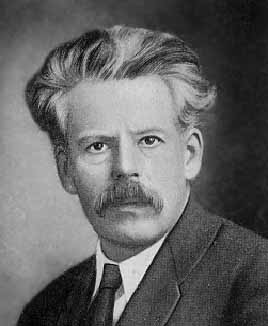| Profile | Major Works | Resources |
Eugene Slutsky, 1880-1948.

Russian economist and statistician.
Eugene (or Eugen or Yevgeni) Slutsky intended to become a mathematician, but he was expelled from the University of Kiev for participating in student revolts. After some wandering through engineering in Munich, he returned to Kiev and ended up getting a doctorate in law in 1911. He went on to teach at the Kiev Institute of Commerce in 1913. By now, Slutsky had a fine sample from several fields.
It was the work of the Lausanne School in economics that attracted him and yielded up his first economics paper in 1915 - published in Italy (at the time, the last citadel of of Walrasian economics). In his 1915 paper, he presented the "Slutsky decomposition" of demand functions into substitution and income effects. His work was ignored and only much later, when the same principle was resurrected independently by John Hicks and R.G.D. Allen in 1934, did he eventually get some recognition.
Slutsky moved to Moscow in 1926, joining Kondratiev's Conjucture Insittute. Kondratiev had just published his long cycle theory, which provoked a controversy with Trotsky and other luminaries. Slutsky contributed to the debate with his seminal 1927 article, .showing that a series of shocks can be summed up to yield regular cyclical properties, i.e. Kondratiev's long cycle was just a coincidence.
Slutsky's 1927 paper, which paralleled that of Frisch was the beginning of the shock-dependent business cycle that precedes the New Classical theory of today. The corollary Slutsky-Yule Theorem (i.e. that the moving average of a random series may generate oscillatory movement when no oscillations exist in the original data) was also laid out in that paper.
The rest of his work was in probability theory. The famous "Slutsky Theorem" which argued that if a statistic converges almost surely or in probability to some constant, then any continuous function of that statistic also converges in the same manner to some function of that constant - a theorem with applications all over statistics and econometrics - was laid out in his 1925 paper. Other limit theorems were provided in 1928 and 1929.
Slutsky became a member of the Mathematical Institute at Moscow University in 1934, and then in 1936, in the Moscow Academy of Sciences.
|
Major works of Eugene Slutsky
|
|
HET
|
|
Resources on Eugen Slutsky
|
All rights reserved, Gonçalo L. Fonseca
